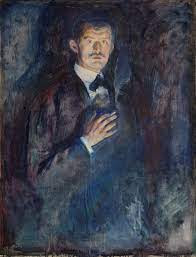NOTE: Read the first four chapters (Johnathan Harker's Diary) for class on Tuesday. and give yourself time to get into the narrative structure of the novel. It's not as difficult or dry as it might initially appear, and this technique has been wildly influential on every gothic/horror novel to follow).
* Harker: "I felt in my heart a wicked, burning desire that they would kiss me with those red lips. It is not good to note this down, lest some day it should meet Mina's eyes and cause her pain; but it is the truth" (43).
* Dracula: "Here I am noble; I am boyar; the common people know me, and I am master. But a stranger in a strange land, he is no one; men know him not--and to know not is to care not for" (25).
Q2: In many ways, these first chapters are just a typical first-person narration from Harker's perspective. Yet Stoker puts a slight twist on this since it's actually from his diary, which is later read by his fiancee, Mina Murray. How does the act of writing somewhat change how we experience his story, considering that it is broken up by dates and an overwhelming sense of time passing? Why might Stoker have chosen to do this rather than simply having Harker narrate the opening chapters? (Chapter 5, for example, begins with a series of letters between Mina and her best friend, Lucy).
Q3: When Harker first beholds the three 'brides' of Dracula, he remarks, "I seemed somehow to know her face, and to know it in connection with some dreamy fear, but I could not recollect at the moment how or where" (Ch.III/61). How might passages like this remind us of Coraline, and indeed, how might Harker’s adventures in Castle Dracula be a lot like Coraline’s adventures with the Other Mother?
Q4: How does Stoker's characterization of Dracula differ from modern versions of Dracula and of vampires in general? Though Dracula is not the first literary vampire, he created the prototypical mythology that all subsequent vampires follow. Nevertheless, Stoker's 'Dracula' shows some remarkable differences that often surprise or even disappoint readers. What might these be...and what might Stoker's intentions have been in writing him this way




